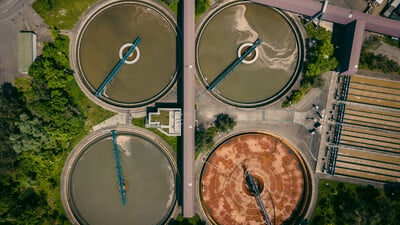Septic tanks and cesspits have been used for centuries if not millennia, but increased awareness of the risks to public health and the environment has led to legislation regarding their acceptable use.
Further changes to this legislation in recent years have redefined what is and isn’t acceptable, and it’s important that anyone who owns, lives in or is building a property with a septic tank system is up to date with these changes.
Sewage management regulations before 2022
Septic tank legislation began in 2010 with the mandatory registration of all septic tanks. The following year, the UK government revised this decision and introduced a consultation process that began in 2014. The upshot of this process was new legislation, introduced in January 2015, to improve water quality and safeguard the environment.
Septic systems installed and operating before January 2015 were classified as ‘existing discharge’, while systems installed after this date were classified as ‘new discharge’.
Under the 2015 regulations, it was acceptable to discharge wastewater from a septic tank either into a soakaway system or a watercourse.
A soakaway system, also called a drainage field, is a network of buried pipes that discharges wastewater into nearby subsoils, thereby preventing pollution. A watercourse discharge system is a pipe leading directly from the septic tank to a lake, river, ditch or stream.
The Environment Agency & General Binding Rules
While it was decided that discharge of wastewater via a drainage field was still acceptable, the same didn’t apply to watercourse discharge. To improve water quality and prevent pollution, the Environment Agency devised what it calls General Binding Rules, to take effect from 1st January 2022 and cover all septic systems not discharging into a properly designed and constructed drainage field. Additional protection was given to zones that are deemed to be ‘environmentally sensitive’, where a permit may be required for a septic system.
How do the new sewage management regulations affect you?
If you are responsible for or buying a property that uses a septic tank, this should have been upgraded to comply with regulations by 1st January 2022. You are also legally obliged to upgrade before selling your property. Failure to comply is likely to result in a fine of £100,000.
You should also be aware that only a proper drainage field designed and constructed according to BS6297: 2007 is permitted; EzyDrains, tunnels, soakaway crates and pits are not acceptable.
If your septic tank is discharging into a watercourse, you have two options. If you have suitable spare land, a drainage field should be installed and the pipe formerly leading to the watercourse must be diverted to it. If you have insufficient land or would rather not have a drainage field, the septic tank must be replaced with a sewage treatment plant that complies with BS EN 12566-3.
There are also slight differences if the property is located in Scotland or Wales.
Sewage management regulations in Scotland
Existing septic tank systems serving properties in Scotland should have been registered with SEPA (Scottish Environment Protection Agency) before 1st January 2022. You can check here to see if an existing septic tank has already been registered.
An existing septic tank system can be registered if it has only been in use since 1st April 2006 and serves 15 people or fewer, or if it serves 50 people or fewer and was in use before 1st April 2006. For any other systems, a license will be required from SEPA.
Sewage management regulations in Wales
Existing septic tanks and sewage treatment plants serving properties in Wales should have been registered with Natural Resources (Wales) before 2022. Consent will also be required for any discharge to a watercourse or drain field.
Registration of a sewage treatment plant or septic tank in Wales is usually free, providing:
- it is a septic tank discharging to a drain field and serving 13 persons or fewer
- it is a sewage treatment plant discharging to a waterway and serving 33 persons or fewer, or
- it isn’t near a protected location and the groundwater under the property doesn’t run to an extraction point for water used for human consumption. Natural Resource Wales will check if a property isn’t in a source protection zone or site of Special Scientific Interest (SSI) when an application is made to register a septic system.
We hope you have found this information helpful and interesting. If you have any further questions, you are always welcome to call the friendly team of drainage experts at Drainfast on 01420 555600 or email [email protected].
Also, look out for more articles in our ongoing series of blog posts, bringing you useful information, insights, guides and tips on all things drainage!

Written by
Bob Stone
Technical Sales
Heading up our Technical Estimating Department, Bob is our in-house quantity surveyor.

